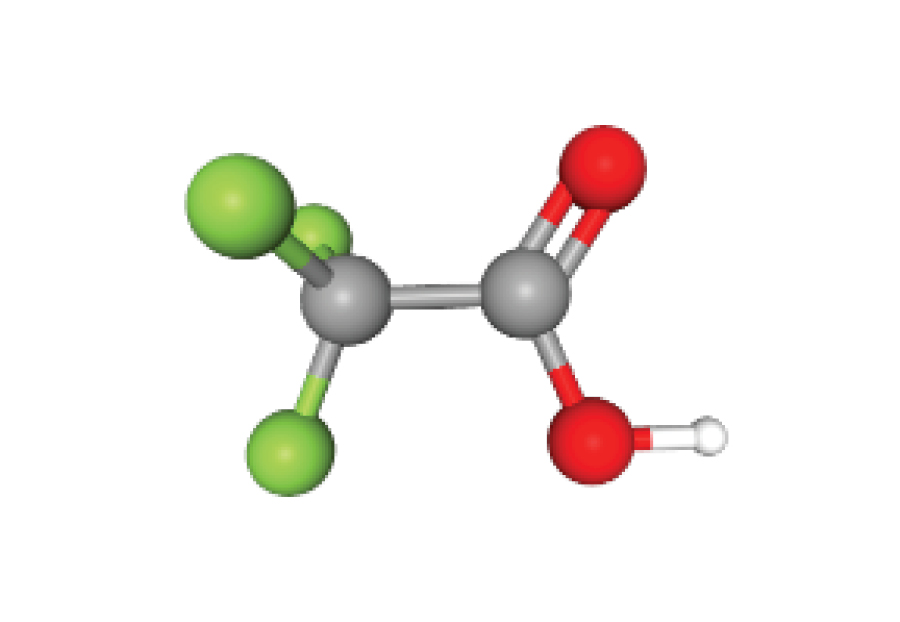Terminology and Classification of Per- and Poly-Fluoroalkyl Substances (PFAS)
Per- and poly-fluoroalkyl substances (PFAS) have become an issue of global concern. PFAS are a large and diverse set of compounds with a wide variety of physical, chemical, and toxicological properties. Some PFAS are persistent, bioaccumulate, and are highly toxic, others are not. Many commercially important agrochemicals, pharmaceuticals, polymers, and chlorofluorocarbon (CFC) replacements are PFAS. The European Commission is considering a proposal to ban all PFAS which has led to concerns being raised by industry. Several definitions of PFAS are in use. The European Chemical Agency (ECHA) defines PFAS as “substances containing at least one aliphatic CF2 or CF3 element.” The U.S. Environmental Protection Agency defines PFAS as “per- and polyfluorinated substances that structurally contain the unit R–(CF2)–C(F)(R1)R2. Both the CF2 and CF moieties are saturated carbons and none of the R groups (R, R1, or R2) can be hydrogen.”
Different definitions of PFAS lead to confusion in technical, regulatory, and public discussions. For example, it has been shown that trifluoroacetic acid (CF3C(O)OH) is a potential degradation product of many agrochemicals, pharmaceuticals, polymers, and CFC replacements. This leads to the question of do these chemicals degrade to give PFAS? Using ECHA definition the answer is “yes,” while using the U.S. EPA definition the answer is “no.” IUPAC has initiated a project to collect, and critically analyze existing information, providing a rigorous definition for PFAS, and standardizing terminology, classification, and nomenclature. The outcomes will benefit the global scientific, regulatory, and industrial communities, by means of a common terminology and a harmonized communication on PFAS. It will align with the IUPAC mission of providing a common language for chemistry and promoting free exchange of scientific information. These findings are expected to help national and global regulation and policy decisions, by filling information gaps and allowing targeted education campaigns.

Is trifluoroacetic acid a PFAS? (Structure from PUBCHEM)
For more information and comment, contact Task Group Chair T. J. Wallington <twalling@umich.edu> or P. Metrangolo <pierangelo.metrangolo@polimi.it> | https://iupac.org/project/2024-006-3-100/
©2025 by IUPAC & De Gruyter
This work is licensed under the Creative Commons Attribution-NonCommercial-NoDerivatives 4.0 International License.
Articles in the same Issue
- Masthead - Full issue pdf
- President’s Column
- The IUPAC-Soong Prize for Sustainable Chemistry—the first IUPAC presidential prize
- Features
- Hazard Information Profiles
- Global Conversation on Sustainability
- Scientists Reviewed 7,000 Studies on Microplastics.
- IUPAC Wire
- Standard atomic weights of three technology critical elements revised
- IUPAC-Soong Prize for Sustainable Chemistry
- Green Chemistry for Life grants presented to Top Young Scientists
- Election of IUPAC Officers, Members of the Executive Board and Science Board
- 2025 IUPAC International Award for Advances in Harmonized Approaches to Crop Protection Chemistry—Call for Nominations
- 2025 IUPAC-Solvay International Award for Young Chemists—Call for applicants
- Navigating New Horizons
- In memoriam: Morton Z. Hoffman
- Project Place
- Advanced methods for assessment of risks of false decisions in analytical chemistry (testing) laboratories—basic concepts and associated terms
- IUPAC HELM Glycans Extension
- Molecular Machine Terminology
- Terminology and Classification of Per- and Poly-Fluoroalkyl Substances (PFAS)
- Chemistry Entrepreneurship
- Multilingual Encyclopedia Polymer Science—Improving Communication in Science and Education
- Making an imPACt
- Terms of Latin origin relating to sample characterization (IUPAC Technical Report)
- Glossary of terms used in biochar research (IUPAC Technical Report)
- Properties and units in the clinical laboratory sciences. Part XXVIII. NPU codes for characterizing subpopulations of the hematopoietic lineage, described from their clusters of differentiation molecules (IUPAC Technical Report)
- Definition of materials chemistry (IUPAC Recommendations 2024)
- IUPAC Recommendations: (Un)equivocal Understanding of Hydrogen and Halogen Bonds and Their (Un)equivocal Naming!
- Conference Call
- Chemistry Education
- Building Chemical Bridges in Latin America: Reflections from the 36th Congreso Latinoamericano de Química
- African Training School on Green Chemistry and Environmental Sustainability
- New Perspectives on the Fight against Chemical Weapons
- Where 2B & Y
- Global Gathering of Chemistry Experts: IUPAC 2025 Comes to Kuala Lumpur, Malaysia!
- Mark Your Calendar
Articles in the same Issue
- Masthead - Full issue pdf
- President’s Column
- The IUPAC-Soong Prize for Sustainable Chemistry—the first IUPAC presidential prize
- Features
- Hazard Information Profiles
- Global Conversation on Sustainability
- Scientists Reviewed 7,000 Studies on Microplastics.
- IUPAC Wire
- Standard atomic weights of three technology critical elements revised
- IUPAC-Soong Prize for Sustainable Chemistry
- Green Chemistry for Life grants presented to Top Young Scientists
- Election of IUPAC Officers, Members of the Executive Board and Science Board
- 2025 IUPAC International Award for Advances in Harmonized Approaches to Crop Protection Chemistry—Call for Nominations
- 2025 IUPAC-Solvay International Award for Young Chemists—Call for applicants
- Navigating New Horizons
- In memoriam: Morton Z. Hoffman
- Project Place
- Advanced methods for assessment of risks of false decisions in analytical chemistry (testing) laboratories—basic concepts and associated terms
- IUPAC HELM Glycans Extension
- Molecular Machine Terminology
- Terminology and Classification of Per- and Poly-Fluoroalkyl Substances (PFAS)
- Chemistry Entrepreneurship
- Multilingual Encyclopedia Polymer Science—Improving Communication in Science and Education
- Making an imPACt
- Terms of Latin origin relating to sample characterization (IUPAC Technical Report)
- Glossary of terms used in biochar research (IUPAC Technical Report)
- Properties and units in the clinical laboratory sciences. Part XXVIII. NPU codes for characterizing subpopulations of the hematopoietic lineage, described from their clusters of differentiation molecules (IUPAC Technical Report)
- Definition of materials chemistry (IUPAC Recommendations 2024)
- IUPAC Recommendations: (Un)equivocal Understanding of Hydrogen and Halogen Bonds and Their (Un)equivocal Naming!
- Conference Call
- Chemistry Education
- Building Chemical Bridges in Latin America: Reflections from the 36th Congreso Latinoamericano de Química
- African Training School on Green Chemistry and Environmental Sustainability
- New Perspectives on the Fight against Chemical Weapons
- Where 2B & Y
- Global Gathering of Chemistry Experts: IUPAC 2025 Comes to Kuala Lumpur, Malaysia!
- Mark Your Calendar

